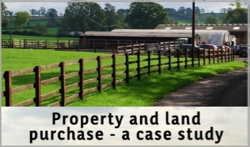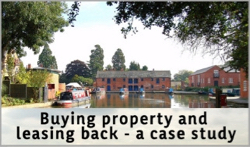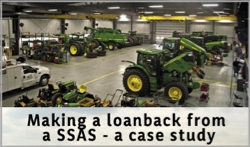Case study
Residential development
Mr Austin has worked in the printing trade all his adult life. Over the years he took advice from a local IFA and this resulted in him setting up a SSAS.
Some time ago the funds in the SSAS were used to purchase the company office and warehouse, which held the industrial printers that provided the basis for the business to flourish.
The time has come for Mr Austin to look towards his well-deserved retirement. He also wants to ensure that his son and daughter are looked after in the long term. They were introduced as members of the SSAS a few years previously and the company has made tax-relievable contributions for them, so they have benefits in their own right. Mr Austin and his wife, who also works for the business and has a sizeable share of the SSAS, have also made nominations within the SSAS to pass their benefits to their children in the event of their deaths. Mr and Mrs Austin are encouraged to hear that if they die under the age 75, then their benefits can be passed to their children within the SSAS, tax free, and they can continue to benefit from the income from the property asset without the need for its sale. The SSAS is proving to be a very useful succession planning tool.
The intention is to take advantage of this succession tool to as great an extent as possible. Mr and Mrs Austin are aware that benefits can be passed down to their beneficiaries on a tax-free basis (prior to 6 April 2023, up to their Personalised Lifetime Allowance Limit) if they die before the age of 75. Next to the warehouse is a piece of land which they own personally. The land has its own access to the highway. There has been a lot of residential property development in recent years and this demand is still very much alive. The IFA suggests that it is possible for him to transfer the land into the SSAS to pursue residential development.
The land is subsequently valued by a suitably qualified surveyor and the SSAS pays the market value to purchase it. The land value is therefore immediately out of the estate.
The trustees, (i.e the directors of the business), then use SSAS funds to appoint an architect to submit a planning application to the local council. The application is successful and the land immediately sees an increase in value within the SSAS. The SSAS cannot own residential property outright and so before the development occurs the land is immediately sold to a developer.
The SSAS is free from Capital Gains and Income Tax, so the gain suffers no tax within the SSAS. The Austins are very satisfied to have made a good gain on the idle land and for that gain to not suffer any tax deductions. They have also reduced their potential inheritance tax liability in the same transaction.





